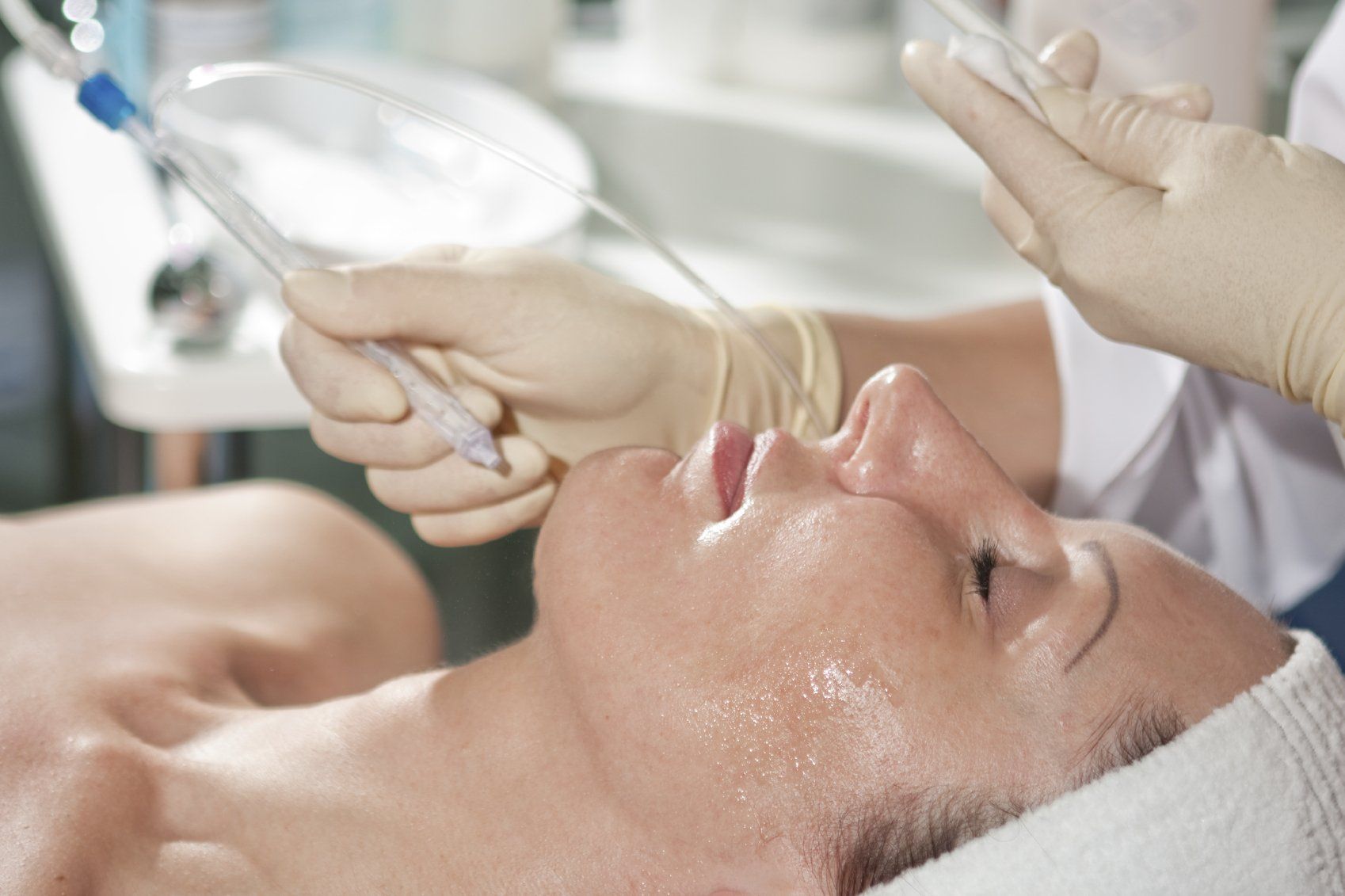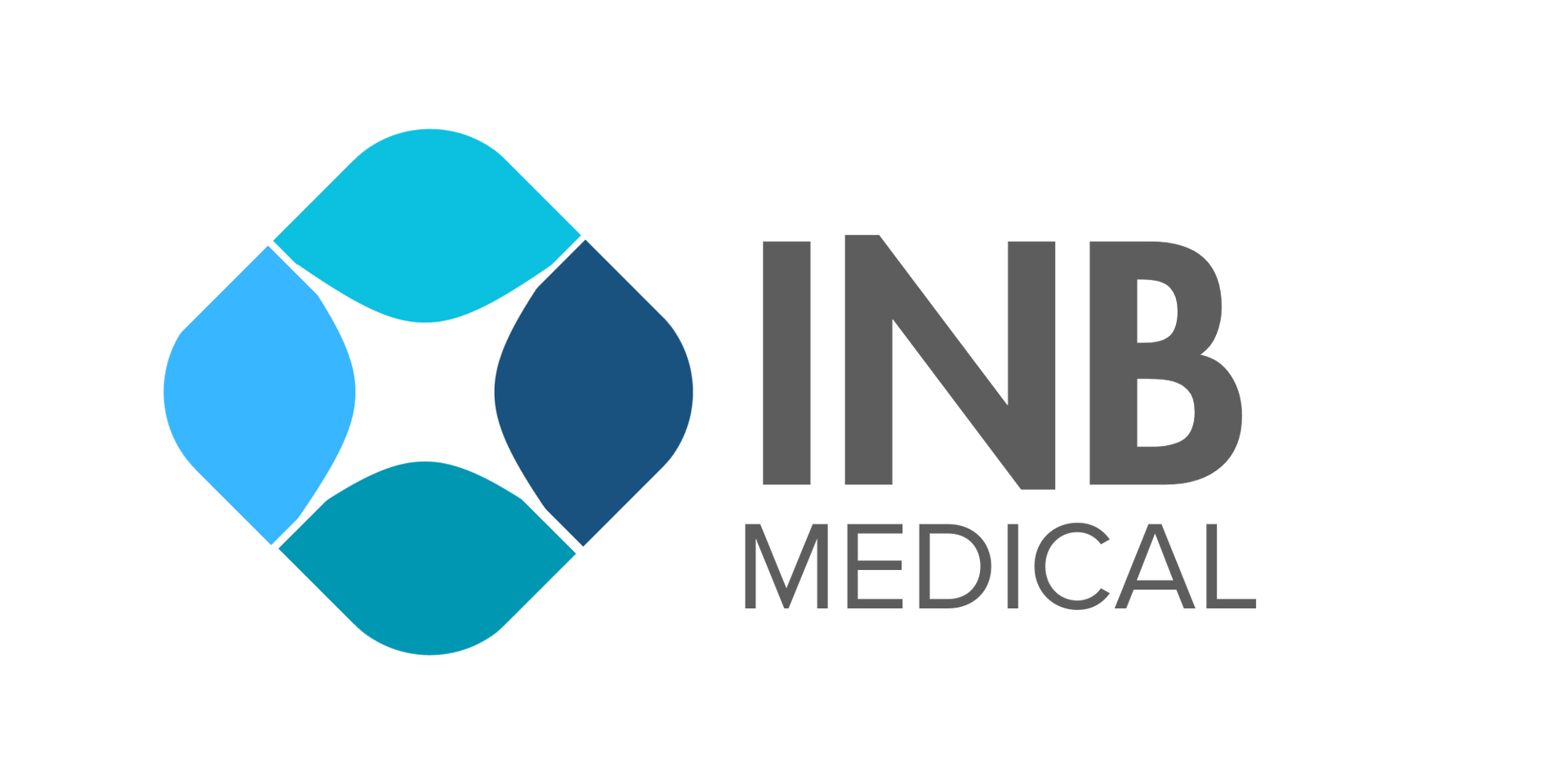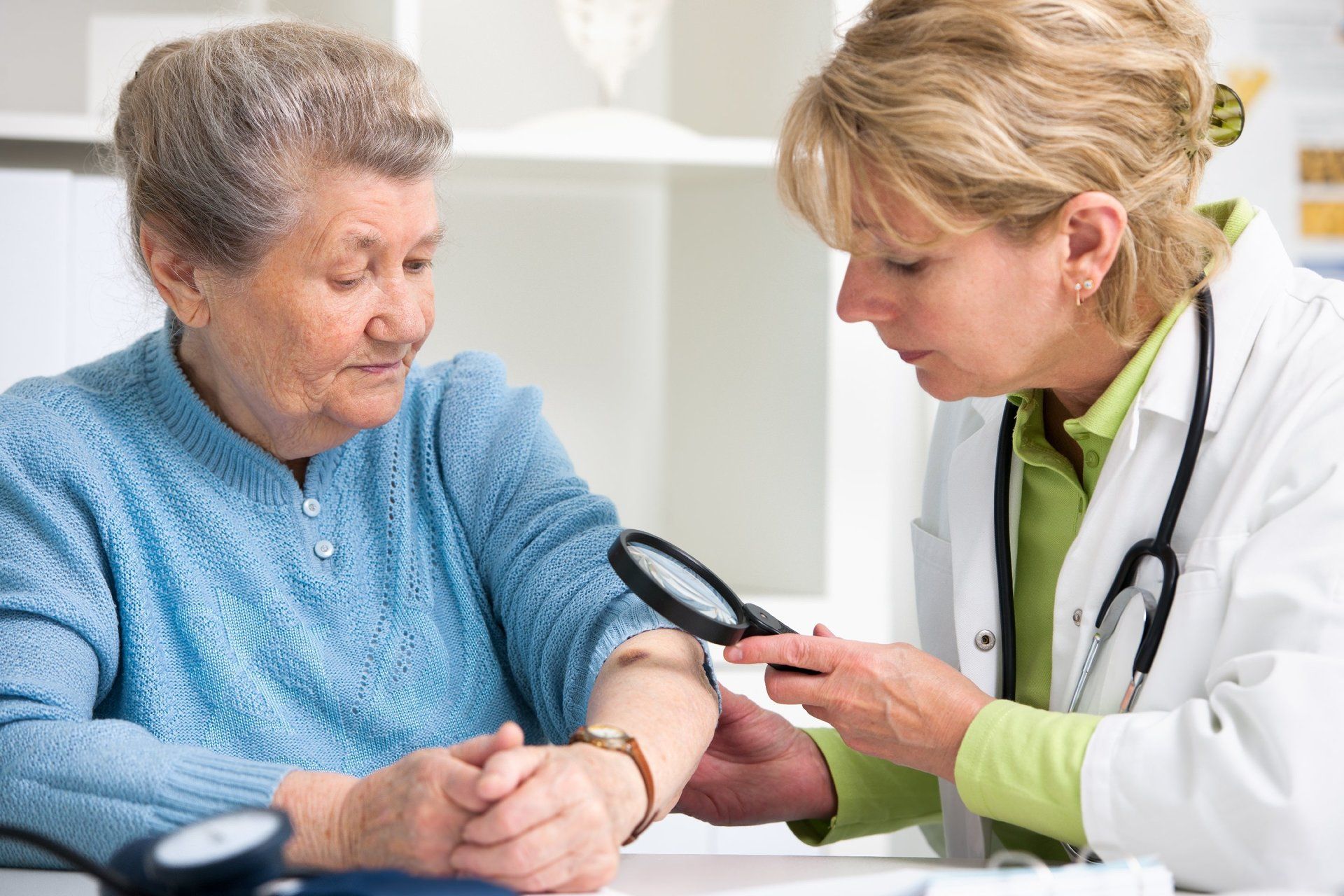9 Clinical Studies that Demonstrate the Anti-aging Benefits of Infrared Light Therapy.
- By INB Medical
- •
- 24 Nov, 2018
- •
In this article, we'd like to point you to 9 clinical studies that clearly demonstrate the anti-aging benefits of red light therapy. So if you're feeling studious, let's dive in...
- The use of light-emitting diode therapy in the treatment of photoaged skin
SOURCE: J Cosmet Dermatol. 2007 Sep;6(3):189-94
BACKGROUND: Light-emitting diode (LED) therapy is an increasingly popular methodology for the treatment of sun damage. Combination use of light wavelengths reported to stimulate collagen synthesis and accelerate fibroblast-myofibroblast transformation may display a composite rejuvenative effect.
OBJECTIVE: To clinically assess reduction in sun damage signs following a 5-week course of LED therapy and to assess subject's perception of the treatment.
METHODS: Thirteen subjects with wrinkles or fine lines in the periorbital and nasolabial region and those presenting Glogau scale photodamage grade II-III received nine 20-min duration light treatments using the Omnilux LED system. The treatments combined wavelengths of 633 and 830 nm at fluences of 126 and 66 J/cm(2), respectively. Sun-damage reduction was assessed at 6, 9, and 12 weeks by clinical photography and patient satisfaction scores.
RESULTS: The majority of subjects displayed "moderate" (50%) or "slight" (25%) response to treatment at investigator assessment. Treatment of the periorbital region was reported more effective than the nasolabial region. At 12-week follow-up, 91% of subjects reported improved skin tone, and 82% reported enhanced smoothness of skin in the treatment area.
CONCLUSION: Good response to LED therapy has been shown in this modest sample. Larger trials are needed to assess optimum frequency of light treatments and overall treatment time.
- A prospective, randomized, placebo-controlled, double-blinded, and split-face clinical study on LED phototherapy for skin rejuvenation: clinical, profilometric, histologic, ultrastructural, and biochemical evaluations and comparison of three different treatment settings
SOURCE: J Photochem Photobiol B. 2007 Jul 27;88(1):51-67. Epub 2007 May 1
BACKGROUND: Light-emitting diodes (LEDs) are considered to be effective in skin rejuvenation.
OBJECTIVE: We investigated the clinical efficacy of LED phototherapy for skin rejuvenation through the comparison of three different treatment parameters and a control, and also examined the LED-induced histological, ultrastructural, and biochemical changes.
METHODS: Seventy-six patients with facial wrinkles were treated with quasimonochromatic LED devices on the right half of their faces. All subjects were randomly divided into four groups treated with either 830nm alone, 633nm alone, a combination of 830 and 633nm, or a sham treatment light, twice a week for four weeks. Serial photography, profilometry, and objective measurements of the skin elasticity and melanin were performed during the treatment period with a three-month follow-up period. The subject’s and investigator’s assessments were double-blinded. Skin specimens were evaluated for the histologic and ultrastructural changes, alteration in the status of matrix metalloproteinases (MMPs) and their tissue inhibitors (TIMPs), and the changes in the mRNA levels of IL-1ss, TNF-alpha, ICAM-1, IL-6 and connexin 43 (Cx43), by utilizing specific stains, TEM, immunohistochemistry, and real-time RT-PCR, respectively.
RESULTS: Objectively measured data showed significant reductions of wrinkles (maximum: 36%) and increases of skin elasticity (maximum: 19%) compared to baseline on the treated face in the three treatment groups. Histologically, a marked increase in the amount of collagen and elastic fibers in all treatment groups was observed. Ultrastructural examination demonstrated highly activated fibroblasts, surrounded by abundant elastic and collagen fibers. Immunohistochemistry showed an increase of TIMP-1 and 2. RT-PCR results showed the mRNA levels of IL-1ss, TNF-alpha, ICAM-1, and Cx43 increased after LED phototherapy whereas that of IL-6 decreased.
CONCLUSION: This therapy was well-tolerated by all patients with no adverse effects. We concluded that 830 and 633nm LED phototherapy is an effective approach for skin rejuvenation.
-Clinical experience with light-emitting diode (LED) photomodulation
SOURCE: Dermatol Surg. 2005 Sep;31(9 Pt 2):1199-205
BACKGROUND: Light-emitting diode (LED) photomodulation is a novel nonthermal technology used to modulate cellular activity with light.
OBJECTIVE: We describe our experience over the last 2 years using 590 nm LED photomodulation within a dermatologic surgery environment.
METHODS: Practical use of nonthermal light energy and emerging applications in 3,500 treatments delivered to 900 patients is detailed.
RESULTS: LED photomodulation has been used alone for skin rejuvenation in over 300 patients but has been effective in augmentation of results in 600 patients receiving concomitant nonablative thermal and vascular treatments such as intense pulsed light, pulsed dye laser, KTP and infrared lasers, radiofrequency energy, and ablative lasers.
CONCLUSION: LED photomodulation reverses signs of photoaging using a new nonthermal mechanism. The anti-inflammatory component of LED in combination with the cell regulatory component helps improve the outcome of other thermal-based rejuvenation treatments.
-Regulation of skin collagen metabolism in virtro using a pulsed 660 nm LED light source: clinical correlation with a single-blinded study
SOURCE: J Invest Dermatol. 2009 Dec;129(12):2751-9. doi: 10.1038/jid.2009.186. Epub 2009 Jul 9
BACKGROUND: It has been reported that skin aging is associated with a downregulation in collagen synthesis and an elevation in matrix metalloproteinase (MMP) expression.
OBJECTIVE: This study investigated the potential of light-emitting diode (LED) treatments with a 660 nm sequentially pulsed illumination formula in the photobiomodulation of these molecules.
METHODS: Histological and biochemical changes were first evaluated in a tissue-engineered Human Reconstructed Skin (HRS) model after 11 sham or LED light treatments. LED effects were then assessed in aged/photoaged individuals in a split-face single-blinded study.
RESULTS: Results yielded a mean percent difference between LED-treated and non-LED-treated HRS of 31% in levels of type-1 procollagen and of -18% in MMP-1. No histological changes were observed. Furthermore, profilometry quantification revealed that more than 90% of individuals showed a reduction in rhytid depth and surface roughness, and, via a blinded clinical assessment, that 87% experienced a reduction in the Fitzpatrick wrinkling severity score after 12 LED treatments. No adverse events or downtime were reported.
CONCLUSION: Our study showed that LED therapy reversed collagen downregulation and MMP-1 upregulation. This could explain the improvements in skin appearance observed in LED-treated individuals. These findings suggest that LED at 660 nm is a safe and effective collagen-enhancement strategy.
-Green tea and red light: a powerful duo in skin rejuvenation
SOURCE: Photomed Laser Surg. 2009 Dec;27(6):969-71. doi: 10.1089/pho.2009.2547
OBJECTIVE: Juvenile skin has been the subject of intense research efforts since ancient times. This article reports on synergistic complementarities in the biological actions of green tea and red light, which inspired the design of a green tea-assisted facial rejuvenation program.
BACKGROUND: The approach is based on previous laboratory experiments providing insight into a mechanism by which visible light interacts with cells and their microenvironment.
METHODS: After 2 months of extreme oxidative stress, green tea-filled cotton pads were placed once per day for 20 minutes onto the skin before treatment with an array of light-emitting diodes (central wavelength 670 nm, dermal dose 4 J/cm2).
RESULTS: Rejuvenated skin, reduced wrinkle levels, and juvenile complexion, previously realized in 10 months of light treatment alone were realized in 1 month.
CONCLUSION: The accelerated skin rejuvenation based on the interplay of the physicochemical and biological effects of light with the reactive oxygen species scavenging capacity of green tea extends the action spectrum of phototherapy. The duo opens the gate to a multitude of possible biomedical light applications and cosmetic formulas, including reversal of topical deterioration related to excess reactive oxygen species, such as graying of hair.
-LED photoprevention: reduced MED response following multiple LED exposures.
SOURCE: Lasers Surg Med. 2008 Feb;40(2):106-12. doi: 10.1002/lsm.20615
BACKGROUND: As photoprotection with traditional sunscreen presents some limitations, the use of non-traditional treatments to increase skin resistance to ultraviolet (UV) induced damage would prove particularly appealing.
OBJECTIVE: The purpose of this pilot study was to test the potential of non-thermal pulsed light-emitting diode (LED) treatments (660 nm) prior to UV exposure in the induction of a state of cellular resistance against UV-induced erythema.
METHODS: Thirteen healthy subjects and two patients with polymorphous light eruption (PLE) were exposed to 5, 6, or 10 LED treatments (660 nm) on an experimental anterior thigh region. Individual baseline minimal erythema doses (MED) were then determined. UV radiation was thereafter performed on the LED experimental and contrl anterior thigh areas. Finally, 24 hours post-UV irradiation, LED pre-treated MED responses were compared to the non-treated sites.
RESULTS: Reduction of erythema was considered significant when erythema was reduced by >50% on the LED-treated side as opposed to the control side. A significant LED treatment reduction in UV-B induced erythema reaction was observed in at least one occasion in 85% of subjects, including patients suffering from PLE. Moreover, there was evidence of a dose-related pattern in results. Finally, a sun protection factor SPF-15-like effect and a reduction in post-inflammatory hyperpigmentation were observed on the LED pre-treated side.
CONCLUSION: Results suggest that LED based therapy prior to UV exposure provided significant protection against UV-B induced erythema. The induction of cellular resistance to UV insults may possibly be explained by the induction of a state a natural resistance to the skin via specific cell signaling pathways and without the drawbacks and limitations of traditional sunscreens. These results represent an encouraging step towards expanding the potential applications of LED therapy and could be useful in the treatment of patients with anomalous reactions to sunlight.
- A Controlled Trial to Determine the Efficacy of Red and Near-Infrared Light Treatment in Patient Satisfaction, Reduction of Fine Lines, Wrinkles, Skin Roughness, and Intradermal Collagen Density Increase
SOURCE: Photomed Laser Surg. 2014 Feb 1; 32(2): 93–100.
doi: [10.1089/pho.2013.3616]
BACKGROUND: For non-thermal photorejuvenation, laser and LED light sources have been demonstrated to be safe and effective. However, lasers and LEDs may offer some disadvantages because of dot-shaped (punctiform) emission characteristics and their narrow spectral bandwidths. Because the action spectra for tissue regeneration and repair consist of more than one wavelength, we investigated if it is favorable to apply a polychromatic spectrum covering a broader spectral region for skin rejuvenation and repair
OBJECTIVE: The purpose of this study was to investigate the safety and efficacy of two novel light sources for large area and full body application, providing polychromatic, non-thermal photobiomodulation (PBM) for improving skin feeling and appearance.
METHODS: A total of 136 volunteers participated in this prospective, randomized, and controlled study. Of these volunteers, 113 subjects randomly assigned into four treatment groups were treated twice a week with either 611–650 or 570–850 nm polychromatic light (normalized to ∼9 J/cm2 in the range of 611–650 nm) and were compared with controls (n=23). Irradiances and treatment durations varied in all treatment groups. The data collected at baseline and after 30 sessions included blinded evaluations of clinical photography, ultrasonographic collagen density measurements, computerized digital profilometry, and an assessment of patient satisfaction.
RESULTS:The treated subjects experienced significantly improved skin complexion and skin feeling, profilometrically assessed skin roughness, and ultrasonographically measured collagen density. The blinded clinical evaluation of photographs confirmed significant improvement in the intervention groups compared with the control.
CONCLUSION: Broadband polychromatic PBM showed no advantage over the red-light-only spectrum. However, both novel light sources that have not been previously used for PBM have demonstrated efficacy and safety for skin rejuvenation and intradermal collagen increase when compared with controls.
-The Efficacy and Safety of 660 nm and 411 to 777 nm Light-Emitting Devices for Treating Wrinkles.
SOURCE: Dermatol Surg. 2017 Mar;43(3):371-380. doi: 10.1097/DSS.0000000000000981.
BACKGROUND:Low-level light therapy (LLLT) using light-emitting diodes (LEDs) is considered to be helpful for skin regeneration and anti-inflammation.
OBJECTIVE:To evaluate the efficacy and safety of 2 types of LLLTs using 660 nm-emitting red LEDs and 411 to 777 nm-emitting white LEDs in the treatment of facial wrinkles.
METHODS: A prospective, randomized, double-blinded, comparative clinical trial involving 52 adult female subjects was performed. The faces of the subjects were irradiated daily with 5.17 J of red or white LEDs for 12 weeks.
RESULTS:In both groups treated with red and white LEDs, the wrinkle measurement from skin replica improved significantly from baseline at Week 12. The red LED group showed slightly better improvement, but there were no statistical differences. In assessments by blinded dermatologists, no significant differences were observed in both groups. In the global assessment of the subjects, the mean improvement score of the red LED group was higher than that of the white LED group.
CONCLUSION:Low-level light therapy using 660 nm LEDs or 411 to 777 nm LEDs significantly improved periocular wrinkles. Especially, 660 nm LEDs could be an effective and tolerable treatment option for wrinkles.
-A study to determine the efficacy of combination LED light therapy (633 nm and 830 nm) in facial skin rejuvenation.
SOURCE:J Cosmet Laser Ther. 2005 Dec;7(3-4):196-200.
BACKGROUND:The use of visible or near infrared spectral light alone for the purpose of skin rejuvenation has been previously reported. A method of light emitting diode (LED) photo rejuvenation incorporating a combination of these wavelengths and thus compounding their distinct stimulation of cellular components is proposed.Objective. To assess the efficacy and local tolerability of combination light therapy in photo rejuvenation of facial skin.
METHODS:
Thirty-one subjects with facial rhytids received nine light therapy treatments using the Omnilux LED system. The treatments combined wavelengths of 633 nm and 830 nm with fluences of 126 J/cm(2) and 66 J/cm(2) respectively. Improvements to the skin surface were evaluated at weeks 9 and 12 by profilometry performed on periorbital casts. Additional outcome measures included assessments of clinical photography and patient satisfaction scores.
RESULTS:
Key profilometry results Sq, Sa, Sp and St showed significant differences at week 12 follow-up; 52% of subjects showed a 25%-50% improvement in photoaging scores by week 12; 81% of subjects reported a significant improvement in periorbital wrinkles on completion of follow-up.
CONCLUSION:
Omnilux combination red and near infrared LED therapy represents an effective and acceptable method of photo rejuvenation. Further study to optimize the parameters of treatment is required.

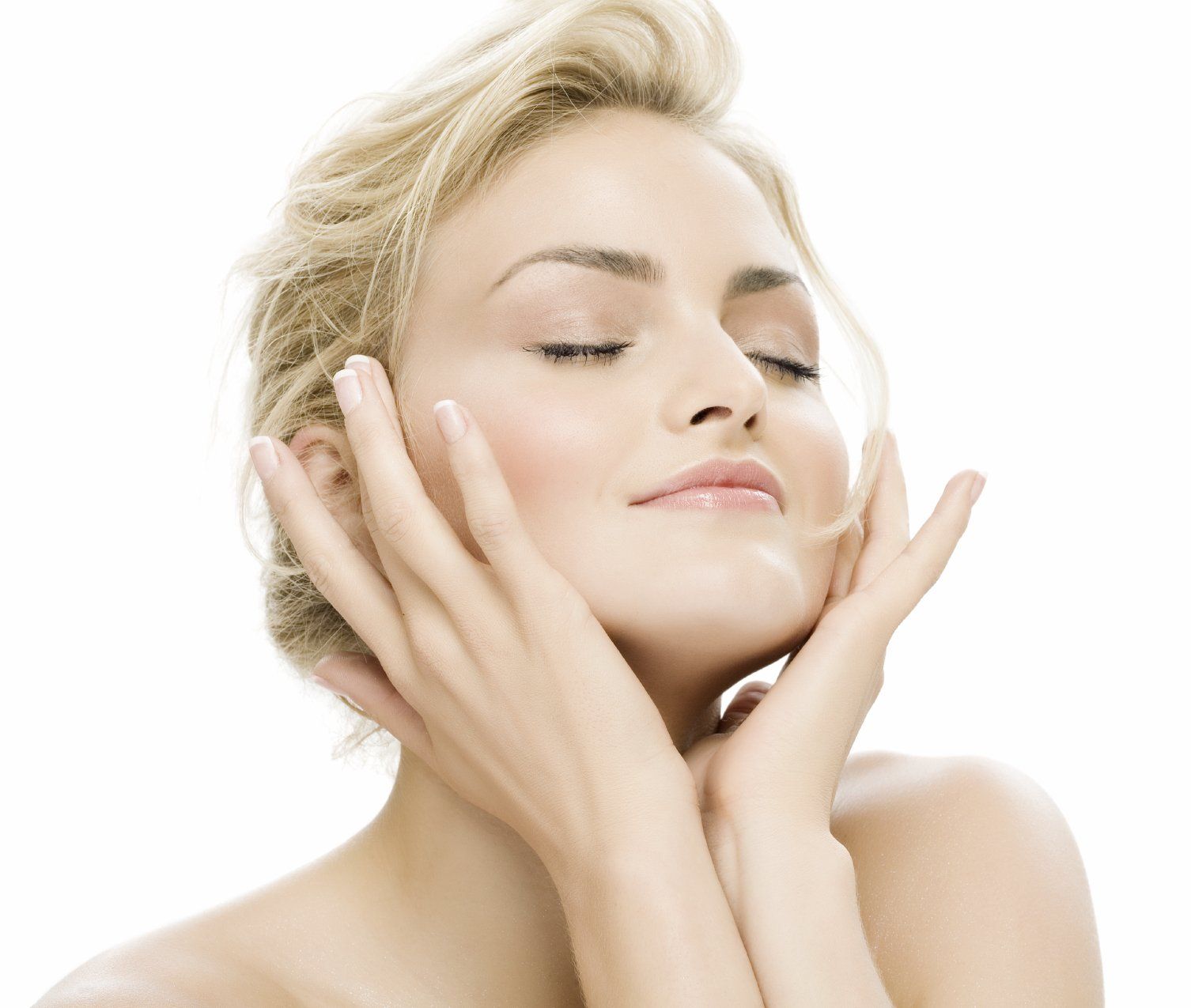
- Myth #1: All Sun Must be Shunned
Getting safe sun exposure every day is actually one of the best actions you can take for your health, as this is how your body produces enough essential vitamin D, which is known to protect against cancer (including melanoma) and support your immune system, cardiovascular system, kidney function, bones and teeth, muscle strength and much more.
While excessive sun exposure, such as getting sunburned, can certainly damage your skin, sensible sun exposure is not only quite healthy, it's a fundamental step in reaching optimal health.
The skin around your eyes and your face is typically much thinner than other areas on your body and is a relatively small surface area so will not contribute much to vitamin D production. So it is strongly recommended that you protect this fragile area of your body, as it is at a much higher risk for cosmetic photo damage and premature wrinkling. You can use a safe sunblock in this area or wear a cap that always keeps your eyes in the shade.
- Myth #2: Tanning Must be Avoided
Assuming you use sensible exposure and avoid getting burned, sensible tanning the "old-fashioned" way (i.e. out in the sun) is perfectly acceptable. The first few days, you should limit your exposure to the sun to allow your body's melanocyte cells to rev up the ability to produce protective pigmentation that not only gives you a tan, but also serves to help protect you against overexposure to the sun.
If you are a fairly light-skinned individual that tends to burn, you will want to limit your initial exposure to a few minutes, especially if it is in the middle of summer.
The more tanned your skin will get, and/or the more tanned you want to become, the longer you can stay in the sun. If it is early or late in the season and/or you are a dark-skinned individual, you could likely safely have 30 minutes on your initial exposure. If you are deeply pigmented and your immediate ancestors are from Africa, India or the Middle East, it is possible you may not even have to worry about how long you are exposed.
Always err on the side of caution however, and let it be your primary goal to never get sun burned, while also protecting the sensitive skin around your eyes and face, as noted above.
- Myth #3: Sunless Tanning Lotions/Sprays are Safe
Sunless tanners contain a lengthy list of chemical agents — up to 45 in the case of spray tanners. Many of these agents have never been studied for their long-term effects on human health, because the U.S. Food and Drug Administration does not systematically review the safety of personal care products.
One of the main ingredients in spray tanning solutions is dihydroxyacetone, a color additive that darkens your skin by reacting with amino acids in your skin's surface layer. Dihydroxyacetone is often abbreviated DHA (which should not be confused with docosahexaenoic acid, the healthy omega-3 fat often given the same abbreviation).
Manufacturers of sunless tanning products claim DHA is a simple carbohydrate sugar solution, but some toxicologists disagree. Part of the problem is that the U.S. government's regulations for DHA allow contaminants such as lead, arsenic and mercury. Further, a report by the National Toxicology Program 1 suggests the risks of DHA remain unclear, pointing to some evidence that DHA may be a mutagen that could induce breaks in DNA strands, which could contribute to accelerated aging and even skin cancer.
- Myth #4: The Higher the SPF of Your Sunscreen, The Better
It's generally unnecessary to purchase sunscreen with a sun protection factor (SPF) greater than 50. The reason for this is because while SPF works by absorbing, reflecting or scattering the sun's rays on your skin, its protective ability is not linear and does not offer a great deal more protection at higher levels.
With regards to SPF, another important factor to remember is that SPF only protects against UVB rays, which are the rays within the ultraviolet spectrum that allows your body to produce vitamin D in your skin. But the most dangerous rays, in terms of causing skin damage and cancer are the UVA rays. This is why you always want to make sure any sunscreen you buy protects against UVA's as well as UVB's … and does NOT contain any common toxic ingredients , such as oxybenzone or retinyl palmitate.
Myth #5: All Skin Care Products on the Market are Safe
It is important to understand that of the 10,500 ingredients used in your personal care products, fewer than 20 percent have been reviewed for safety in the last 30 years, according to an Environmental Working Group (EWG) analysis. 2
The reviews that have been done were conducted by a fox in the henhouse—the Cosmetics Ingredients Review, which is run by the cosmetics industry! Not all ingredients need even be mentioned on the label—if they don't want to include one for some reason, they can just leave it off. Therefore, most personal care product formulations are based on nothing more than marketing success, designed to smell good, look good and feel good when you rub them on your skin, regardless of their impact on your health.
But in reality, as the CNN video above describes, many skin care products on the market contain chemicals (including parabens, phthalates, triclosan and others) that have been linked to cancer, hormone disruption, reproductive toxicity and other health problems.
One of the core principles to remember when it comes to skin care is that whatever you slather onto your skin will be absorbed into your body and enter your bloodstream. This is why it's so important to avoid skin care products containing questionable chemicals! Your skin is an excellent drug delivery system, so you should be just as careful with what you put on your skin as you are with what you eat, if not more so, as your gut actually helps protect you against some of the toxins you ingest by filtering them out ... a protection you don't get when a chemical is absorbed through your skin.
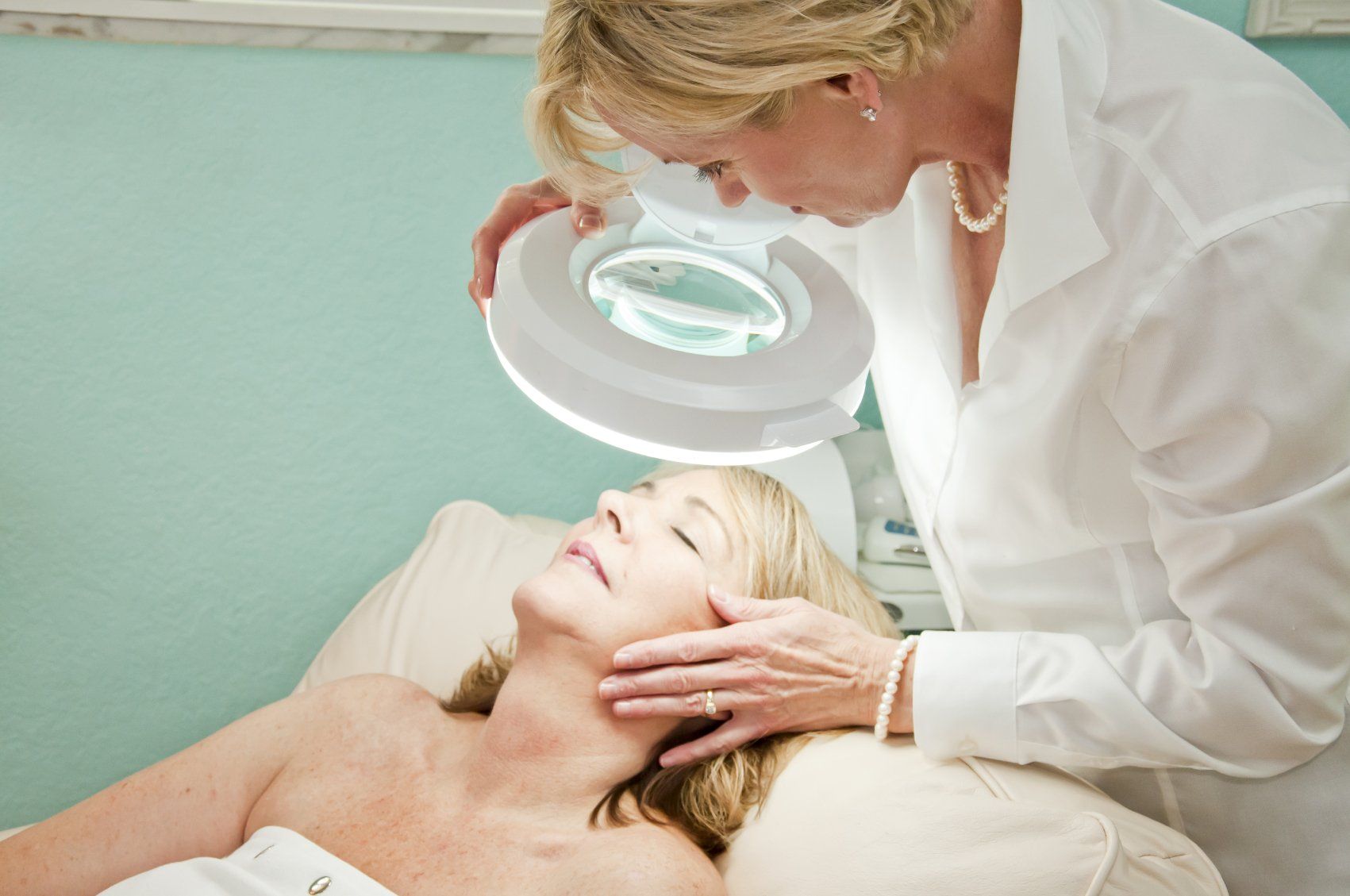
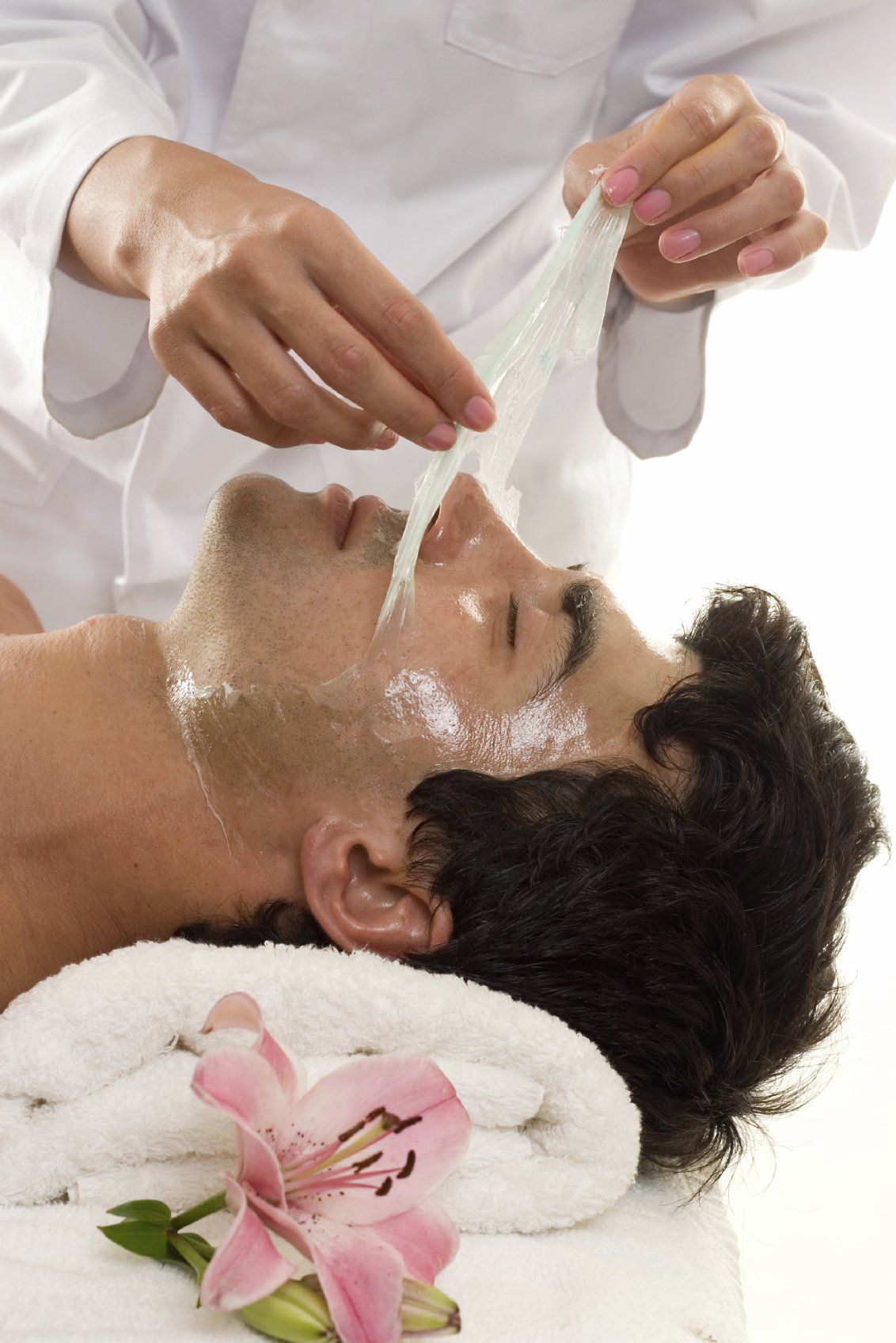

Ever wonder how women in ancient times or in the Renaissance used to make themselves beautiful?
Well, let’s just say they didn’t have the skincare wonders we have now – med spa procedures, Botox , and countless anti-aging creams and serums.
Curious to learn more about the history of skin care? Then travel back through time with us as we discuss how women in ancient cultures up to modern day cared for their skin.
HOW DID PEOPLE LOOK HOT CENTURIES AGO?
Ancient Egypt
Did you know that the first archaeological evidence of cosmetics is from Ancient Egypt roughly 6,000 years ago? But cosmetics weren’t just for aesthetics – they also protected the Ancient Egyptians from the elements, like the sun and insects. Makeup was also used to honor gods and goddesses. In terms of skincare, the Ancient Egyptians used castor, sesame, and moringa oils to fight wrinkles and preserve their youth. Ancient Egyptians also made a soap paste out of clay and olive oil to cleanse their skin. What is more, Egyptian women incorporated honey and milk masks into their beauty regimes to moisturize their skin, and they also took milk baths and used dead sea salts to exfoliate, rejuvenate, and heal their skin.
Ancient Greeks
In Ancient Greece, precious oils, perfumes, cosmetic powders, eye shadows, skin glosses, paints, beauty unguents, and hair dyes were in universal use. Ancient Greeks made their own skincare products using local, natural ingredients. One of the most widely used skincare treatments was mixing fresh berries with milk, and then applying the paste on the facial area. The Ancient Greeks also used olives and olive oil as exfoliants and moisturizers. Lastly, honey along with milk and yogurt were used as anti-aging preparations.
Medieval Times
During the 12th century, cosmetics were regularly used in medieval Europe. Ointments consisted of animal fats. Smooth, white skin was highly regarded, and many women used herbal remedies to promote fair skin and diminish pimples. Aloe vera, rosemary, and cucumbers were used to cleanse the skin. Seeds, leaves, and flowers were also mixed with honey to create face masks, and vinegar was used as an astringent.
Renaissance
Women in the Renaissance period used silver mercury, lead, and chalk to color their faces. Most of the skin care practices were the same as the medieval period, and women primarily relied on herbs and honey to cleanse and rejuvenate their skin. Some other skin care remedies included using broom stalks to cleanse the skin and oatmeal boiled in vinegar to treat pimples. Bread soaked in rose water was also used to soothe puffy eyes.
The Baroque Era
During the Baroque Era, women believed in saunas and sweat cleansing. Milk baths were also used for smoother, clearer skin. Make up during this time was intended to look like paint, and heavy makeup was considered more respectable. Rouge was very popular, and in the 1780s, French women used two million pots of rogue per year. Women’s lips were reddened with distilled alcohol or vinegar.
1800s
Exercise, cleanliness, and skincare were all held in high regard during the 1800s. Zinc oxide was used to lighten skin, but often caused allergic reactions. Hygiene products became less expensive and more accessible. Harsh cleansers were often used as were egg yolks, honey and oatmeal to often the skin and help diminish blemishes. Lemon juice was also used to naturally bleach the skin a few shades lighter. During this time, too, Chapstick, Vaseline, and baby powder were invented, all of which were used in skincare regimes.
1900s
The 1900s was an explosion in terms of accessible skincare for women. Carmex was invented in 1937, and sunscreen in 1944. In 1946, Estee Lauder launched their cosmetics line in NYC, and then in the 1950s Clearasil, Ponds, Oil of Olay, and Clinique were all launched, too. The 1980s saw a rise in all natural skincare products. Dr. Howard Murad’s line was launched in 1989, and Burt’s Bees in the 1980s, too. In 2002, the FDA approved Botox for frown lines on the face. In 2007, The Zeno, a hand-held, battery-operated device, transfers heat onto a blemish, killing the bacteria and making them disappear after only a few treatments.
Reference:
https://www.laseraway.com/news/brief-history-skincare-ages/
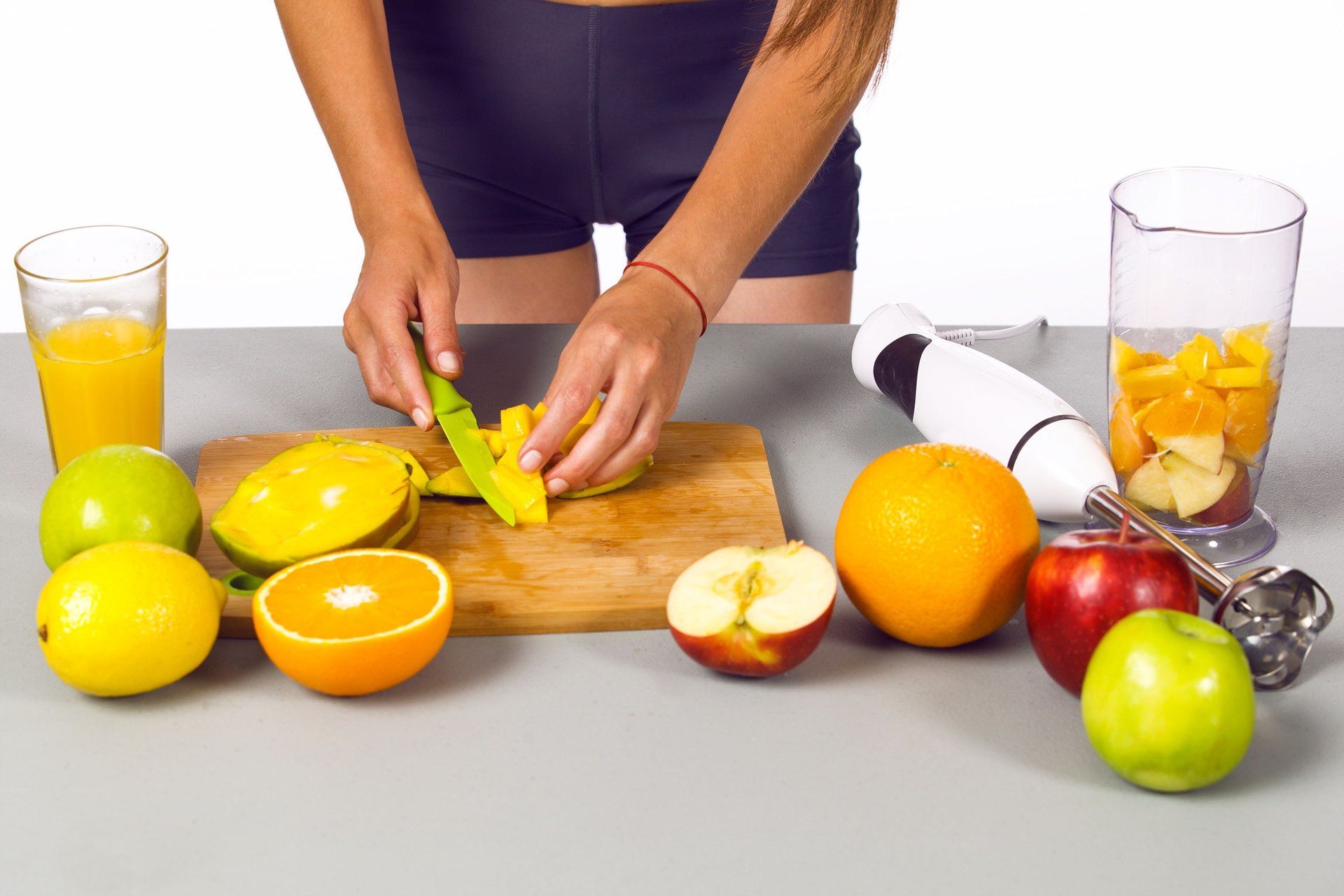
Studies have shownthat eating foods with these deeply colored pigments can make your face actually look healthier than being tanned. [1]
The more red and yellow tones found in your skin, the more attractive the people were found to be. The redder tones are caused when people are flushed with blood, particularly if the blood has lots of oxygen in it. Researchers found that, given the choice between skin color caused by suntan and skin color caused by carotenoids, people preferred the carotenoid skin color, so if you want a healthier and more attractive skin color, you are better off eating a healthy diet.
In order to have clear, healthy skin, you need to make sure your body is relatively free of toxins, so cleansing your body of dangerous substances while putting in the finest nutrients is essential. The organs responsible for providing you with beautiful skin include your liver, kidneys, adrenals, thyroid, and your large and small intestines.
- Your liver and kidneys are the two organs that filter out impurities on an ongoing basis. If your diet is less than ideal, these two organs can easily become overtaxed, which can lead to breakouts and other skin problems.
- Your adrenals make many essential hormones, such as pregnenolone, DHEA, estrogen, progesterone and testosterone. Hormonal imbalances can also result in problematic skin conditions, so adrenal function is important as well.
- A well-nourished, energetic thyroid also provides hormones and works closely with your adrenals to create energy. Dry, flakey, sluggish skin can be evidence of a weak thyroid.
- Your small- and large intestines provide nutrients to all your organs and remove waste products from your body. When waste meant for elimination remains in your intestines your skin becomes thick, oily and blemished. Pure, flawless skin is typically a reflection of clean intestines.
Eating a healthy diet as described in my nutrition plan , which focuses on whole, bioavailable organic foods, is your number one strategy for helping your body detox naturally while supplying the necessary nutrients your skin needs to thrive. That said, some foods are particularly effective at promoting beautiful, clear skin, including:
- Animal-based omega-3 fats: Omega-3 fats help to normalize skin lipids and prevent dehydration in the cells. This keeps skin cells strong and full of moisture, which can help to decrease the appearance of fine lines. Fatty acid deficiency can manifest in a variety of ways, but skin problems such as eczema, thick patches of skin, and cracked heels are common. Plus, omega-3 fats may have an anti-inflammatory effect that can help to calm irritated skin, giving you a clear, smooth complexion.
- Vegetables: Ideally fresh, organic and locally grown.
- Fermented foods are even better as they can start with the same vegetables but are converted by bacteria to superfoods, which help promote the growth of friendly intestinal bacteria and aid in digestion.
- Avoid Sugars, Fructose and Grains: This is probably the single most important step you can take to improve your skin health. If you eliminate all sugars, fructose and grains from your diet for a few weeks there is a major likelihood you will notice rapid improvement in your complexion.
Reference:
[1] Evolution and Human Behavior Volume 32, Issue 3, May 2011, Pages 216–227
